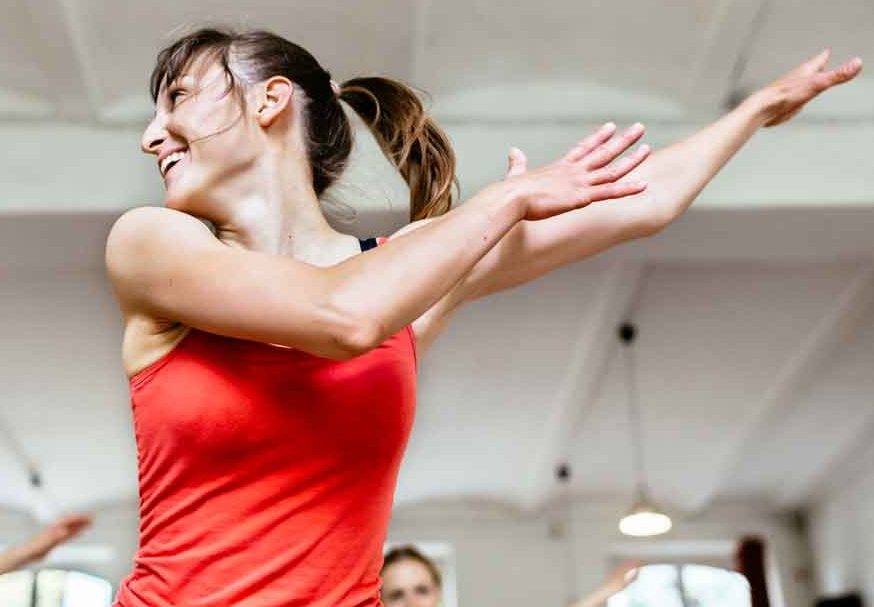How to Lower Cholesterol with Aerobic Exercise

Learn how to lower cholesterol with aerobic exercise. Start with walking, then work up to more intense exercises like cycling and resistance training.
It's not too difficult to learn how to lower cholesterol. Turn on the dance music. Take a vigorous walk. Take up rowing. Adding resistance training and other aerobic exercises can lower your bad cholesterol numbers and raise your good ones.
How aerobic exercise lowers your bad cholesterol — your LDL numbers — is not totally clear. Researchers know that “exercise has been shown to increase levels of enzymes that remove bad cholesterol from the blood,” said Victoria Shin, MD, interventional cardiologist, and chair of cardiology at Torrance Memorial Medical Center. “And exercise has been linked to a consistent increase in the HDL with moderate decreases in triglycerides and LDL.”
YOU MIGHT ALSO LIKE: How to Fire Up Your Metabolism
If you’re confused about good versus evil (that is, bad cholesterol levels), here’s a quick lesson. LDL, your bad cholesterol, clogs arteries with plague. Clogs can lead to a heart attack or stroke. HDL, your good cholesterol, removes LDL cholesterol from your arteries and can protect you against heart attacks and strokes.
Your doctor can tell you how much good and bad cholesterol is in your body via a simple blood test. Your total cholesterol levels should be less than 200. Your LDL should be less than 100. Your HDL level should come in at 60 or greater.
How to lower cholesterol
Exercise can improve the good and lower the bad cholesterol levels. “Both aerobic exercise and resistance training work in conjunction to improve cholesterol profiles,” Shin said. She suggests:
- Race walking
- Jogging
- Running
- Swimming laps
- Hiking uphill
- Playing tennis
- Spin class
If you are new to exercise, start slowly and talk with your physician. Overdoing aerobic exercise is the fastest way to burnout, and you could hurt yourself.
If you consider yourself a coach potato, start walking, then work up to more intense aerobic exercises. They can lower your bad (LDL) cholesterol levels if you do them three to four times a week for 30 to 40 minutes.
Shin also recommends jumping rope. At a moderate rate, you can burn between 10 and 16 calories a minute. Start with three 10-minute intervals. A 10-minute round of jump rope equals running an 8-minute mile.
Cycling is another favorite activity. The benefits are numerous and include:
- Increased muscle strength and flexibility
- Improved joint mobility
- Decreased stress levels
- Increased bone strength
You can also try rowing, which offers you a total body workout. It works your:
- Quads
- Hamstrings
- Glutes
- Lats
- Core
- Shoulders
- Triceps
- Back
- Biceps
If you like the outdoors, cross-country skiing will give your body a total aerobic workout. It also strengthens and improves your heart health.
If you want to work out with a partner, try ballroom dancing or turn up the music at home and dance. With lively music, you’ll have fun while you’re improving muscle tone and strength. Dancing also builds endurance and motor fitness, burns calories, benefits your heart and lungs, and builds strong bones, reducing your risk of osteoporosis.
Resistance (strength) training
While aerobic exercises are good for your heart health, Shin says that adding resitance training is beneficial, too. It’s also known as strength training and uses machines and free weights that you’ll find at a gym or health club. Resistance training also lowers high blood pressure and helps to improve diabetes.
Resistance training also helps you develop muscle strength and endurance, lowers blood pressure, can prevent injuries to your bones, and controls your blood glucose.
Start with moderate aerobic exercise and transition to strength training. The repetition and stretching are also good for your heart and muscles.
Just be sure not to lift too much weight or overdo strength training or any type of exercise. That does more harm than good. Always talk to your doctor before you start a new exercise program.
YOU MIGHT ALSO LIKE: What Happens in Your Body When You Work Out?
Updated:
December 12, 2023
Reviewed By:
Janet O’Dell, RN